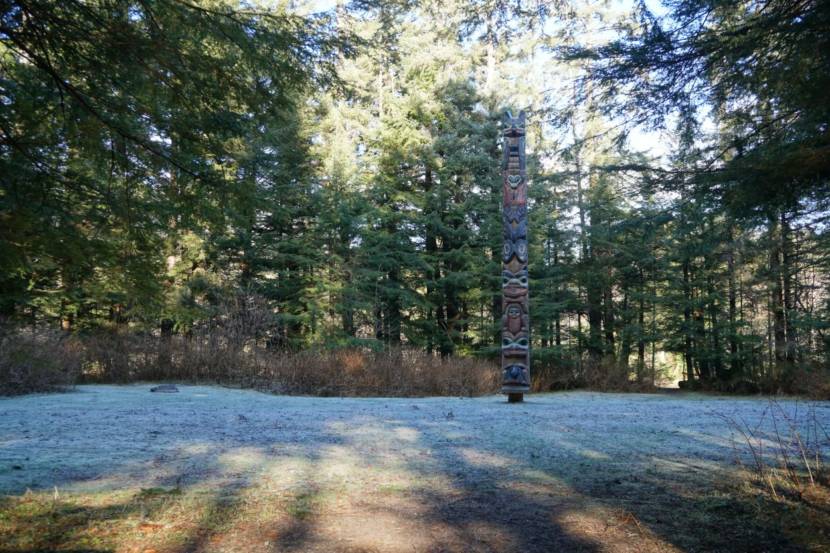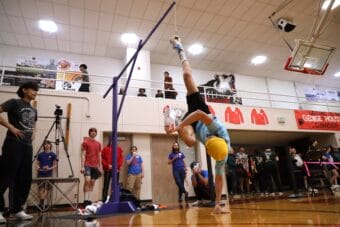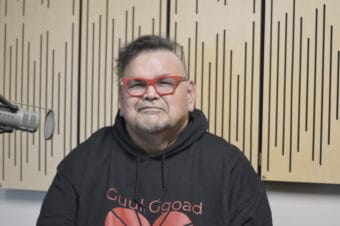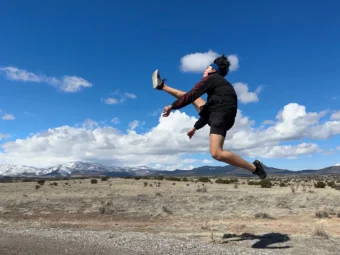
Researchers have confirmed the location of an important site in Tlingit history. The Sitka National Historical Park has long commemorated the spot of a Kiks.ádi fort destroyed by Russian invaders over 200 years ago. But the fort’s exact location remained uncertain until now.
A peaceful clearing, a plaque and a totem pole mark the spot where Shís’gi Noow, or the Fort of Young Saplings, once stood.
“It’s a sacred place, and I have been going out there for years when I feel in the need of strength,” Louise Brady, or Kh’asheechtlaa, said. Brady is Kiks.ádi from the Point House in Sitka.
“When I’m working on a project that I feel is, there’s some controversy, I go out there because that’s where my ancestors died for this land and for us to be able to be here today as Tlingit people,” she said.
The fort was built following the Battle of Old Sitka in 1802 when the Kiks.ádi ousted Russian colonists from a site around seven miles north. They anticipated the Russian return two years later and held off invaders from the fort for four days until the loss of their gunpowder supply ultimately forced them to retreat and abandon the site. The Russians then established a colony that remained until they sold Alaska to the U.S. in 1867.
Oral histories and archaeological evidence like cannonballs and debris pointed to the clearing near the mouth of the Indian River, or Kaasda Héen, but some thought the fort stood in a different part of the park. A study released this week in the journal Antiquity has dispelled those doubts. Tommy Urban is a research scientist at Cornell University and the study’s co-author.
“We did such a large survey, much larger than the area immediately around the fort clearing because we wanted to rule out these other possibilities that it could be located somewhere else in the park,” Urban said.
Urban used something called an electromagnetic induction unit, which works kind of like a metal detector, to survey more than 40 acres of park property by hand over the course of two weeks. He also used a tool called a ground penetrating radar.
“With the ground penetrating radar you’d think I was mowing the lawn or running a vacuum cleaner or something like that and it’s about that size,” he said.
The technologies helped Urban and co-author Brinnen Carter determine the exact outline of the wooden fort, which was slightly larger than the current clearing and shaped like a trapezoid. That knowledge not only has historical implications but also cultural significance, said Carter, who’s a former park employee and current cultural resource manager at Shenandoah National Park.
“It has really in a lot of ways been a symbol of ongoing cohesion in the Tlingit community in Sitka to have that site available and accessible for Kiks.ádi people,” Carter said.
Brady of the Kiks.ádi clan said it’s reassuring to know with certainty where the fort once stood. She hopes the findings prompt more visitors to learn the history of the site and remember those who died there.
“Now we know for sure that this is the place that this happened and let’s learn more and learn more together. And respect all the history that is being taught or that is available,” she said.
Brady said she’s always pleased when scientific and technological findings align with oral histories.
The park will include information from the study in an upcoming cultural landscape report. They’ll then work with the Sitka Tribe of Alaska to decide whether to make changes to the site, like additional signage or a physical marker identifying the fort’s outline.



